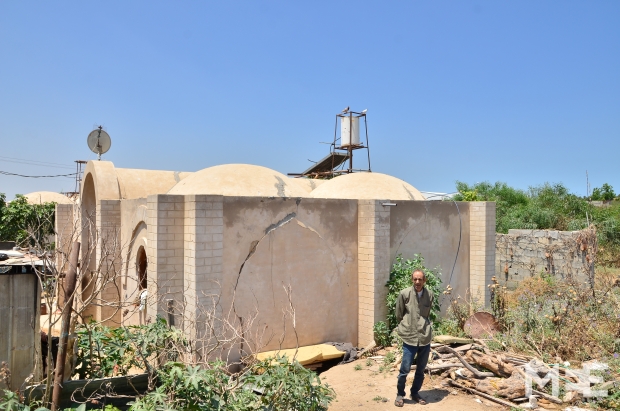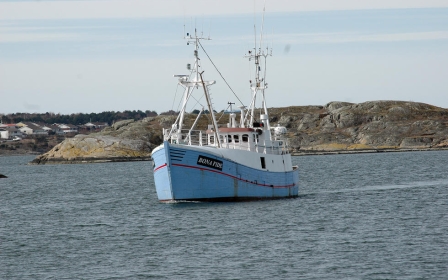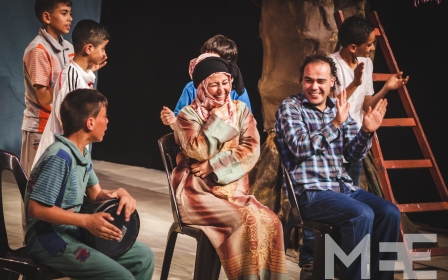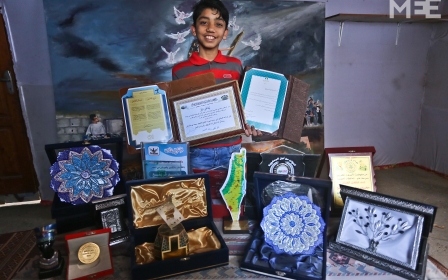Gaza’s siege encourages locals to innovate
In the wake of Hamas coming to power in Gaza in 2006, Israel imposed a siege on the coastal enclave, which has widely been described as “collective punishment,” resulting in a grave humanitarian crisis.
Since the start of the blockade, three Israeli offensives – the so-called Operation Cast Lead (2009), Operation Pillar of Defence (2012), and Operation Protective Edge (2014) - have all added to the crisis by destroying thousands of homes and devastating food and other basic supplies in the Strip.
Gaza’s harsh conditions can be illustrated through the locals’ daily struggle with electricity - which is now seen as a luxury since blackouts can last 16-18 hours every day. This reality has warped people's lives for years and they have to plan daily activities around the four to six hours when they anticipate power availability.
Gaza’s only power plant - built in 2004 to try to ease the situation – was bombed by Israel during last summer’s 51-day war, while Israel has also regularly limited the supply of electricity and industrial fuel needed to power the plant.
Apart from the lack of electricity, the siege has resulted in a lack of cement and building supplies which, coupled with the massive scale of destruction, leaves many families living in temporary shelters.
Although the situation in Gaza is dire, it has also led many Gazans to invent new ways of living, accessing basic supplies and going about their daily lives.
Clay ovens
Every morning since last summer’s 51-day war on Gaza, Um Ahmad Radwan and her neighbour Um Attiya carry trays of kneaded dough to a clay oven in the Azzanah neighborhood of eastern Khan Younis in Gaza. At the clay oven, the two women bake bread and prepare food for their families.
As she takes out loaves of freshly-baked bread from the hot oven, Um Ahmad, a mother in her late forties, explains to MEE: "Um Attiya and I bought this oven after the war and have since relied on it heavily because of the lack of electricity and gas supplies in Gaza."
The two neighbours bought their clay oven from a local woman called Nawraz, who has been manufacturing the ovens for 12 years. Although demand for the product was minimal before the war, 48-year-old Nawraz says more and more local women are now depending on her ovens to make do.
"Since the end of the war more local residents have requested clay ovens. I am now selling between five to seven ovens a month, while before the war, I would only sell up to three over the same time period," Nawraz told MEE.
Nawraz uses iron bars, cement and clay to manufacture her ovens which she then sells at around 100 shekels ($25) each. Like Um Ahmad, the clay ovens have helped women in Gaza prepare food and bake bread as power to run electric and gas cookers is increasingly scant.
Although the women are thankful for having found this small invention, they are frustrated at having to spend long hours in front of a hot oven every day.
"Is this a life? We spend most of our day sitting here, next to this small oven just to bake enough bread for our families,” Umm Ahmad told MEE.
Um Attiya, who used to live in a humbly furnished home on the eastern side of the Strip - a home that was utterly destroyed during the summer offensive - expressed similar feelings of distress and fatigue.
“We have very limited access to cooking gas and electricity is not regularly available. Putting up with eight-hour-long outages is increasingly difficult,” said Um Attiya as she wrapped her baked bread in a plain-coloured cloth.
Plastic-produced fuel
In addition to the power-outages, fuel has also become increasingly unavailable in the Gaza Strip, as supplies previously coming in from Egypt through the Rafah border crossing and via underground tunnels have diminished.
To provide an alternative to the lack of fuel, 55-year-old Ibrahim Soboh and his son Mahmoud have invented a fuel-production line using plastic material collected from their surroundings in the central Nusairat refugee camp.
"We came up with the idea as power outages became the norm and fuel became increasingly scarce on the local market," said Soboh.
Pointing towards a rudimentary-looking machine composed of a boiler covered in clay and connected to a plastic barrel and a network of zig-zag pipelines, Soboh explains how his homemade device produces fuel from on top of his home’s rooftop.
"The first time we tried out the machine, we used about 50 kilograms of plastic collected from plastic-manufacturing facilities nearby,” said Soboh.
“With that, we managed to produce 35 litres of raw fuel, which we then used to run a power generator, a motorcycle and a van," explained Soboh.
Despite initial success, Soboh’s fuel production has shrivelled over the past few months as several new challenges have arisen.
In addition to plastic material itself becoming increasingly unaffordable, Soboh and his son say a tool for distilling the fuel is necessary for the continuation of the production line.
"The smoke produced from burning plastic material turns into a liquid fuel, but we can’t separate the gasoline from the diesel. We need a separating machine which costs about $18,000," Soboh told MEE.
Soboh also fears that heating the plastic material using firewood puts local residents at risk by exposing them to poisonous gases.
“Using firewood to melt the plastic is frankly quite risky for our neighbourhood, but the safer alternative – an electric heater that uses a high-voltage and prolonged power supply - isn’t viable for us in Gaza,” he said referring to the continuous power outages.
Soboh, who completed a two-year diploma in electronic engineering 30 years ago, now hopes his project might be sponsored by a local or international body.
Sand homes
Eleven members of the Aler family live in a 100-square-metre home built of sand which replaced their cement-based multi-story house destroyed during the 2009 Israeli offensive on Gaza .
The mother of the household, Umm Hayel, told MEE that despite her sand home being temporary, she is thankful that her family does not have to survive in a tent or portacabin like many Gazans after the three recent wars.
"In the summer, it is cool inside, but winters are difficult as rainwater seeps through the cracks. I’m still grateful for what we have,” she told MEE.
The idea of sand homes came about in 2009, when the United Nations Relief and Works Agency for Palestine Refugees in Gaza (UNRWA) provided local engineer, Emad al-Khaldi, with funds to design and supervise the construction of four homes at a total cost of $17,000.
Khaldi is now working on an improved version of the sand homes which he hopes can be used to construct shelters for many Gazans who lost their homes during the 2014 summer war.
"The entire home will be built out of sand, but I hope we can now incorporate an isolation layer to keep out rain and humidity,” Khaldi told MEE.
According to Gaza’s Ministry of Housing, Israel’s 2014 war destroyed about 18,000 homes in Gaza. Although there has been an international discussion around the initiation of mass reconstruction efforts, the process has yet to start.
In October last year, international donors who met at the Egyptian Red Sea resort town of Sharm el-Sheikh pledged a total of $5.4 billion for the reconstruction of war-torn Gaza.
The Palestinian Contractors Union in Gaza has estimated that the rebuilding of homes destroyed during the war requires at least 5.5 million tonnes of raw building materials, including 1.5 million tonnes of cement alone. But according to the Palestinian Ministry of Housing, Israel has allowed in only 120,000 tonnes of cement since October of 2014.
"I believe we are truly blessed to have this sand home while others are having to live in shelters set up at schools in metal shacks,” said Umm Hayel’s husband Moshref.
“I do hope however that the international community will start addressing our needs before Gaza collapses completely," he told MEE.
New MEE newsletter: Jerusalem Dispatch
Sign up to get the latest insights and analysis on Israel-Palestine, alongside Turkey Unpacked and other MEE newsletters
Middle East Eye delivers independent and unrivalled coverage and analysis of the Middle East, North Africa and beyond. To learn more about republishing this content and the associated fees, please fill out this form. More about MEE can be found here.






